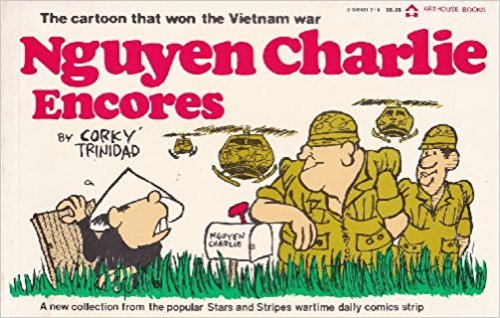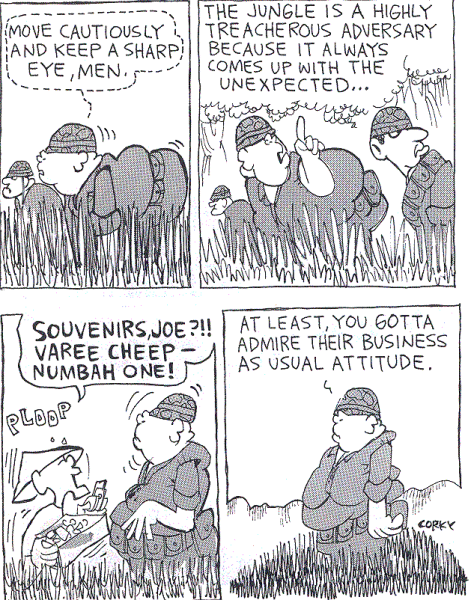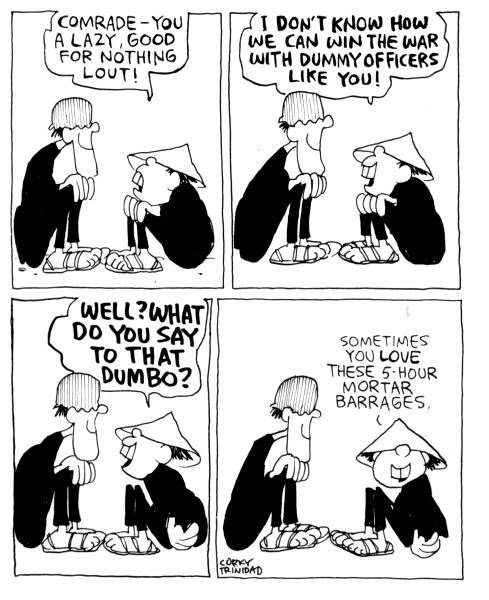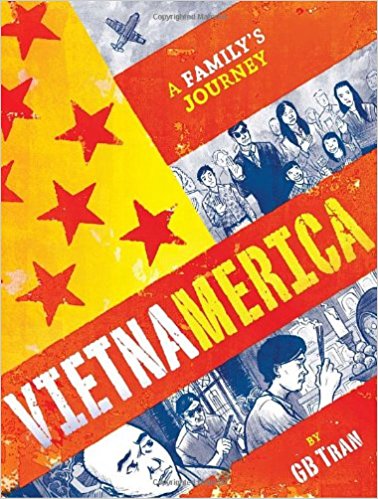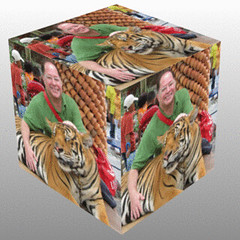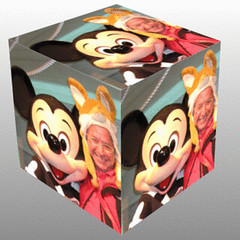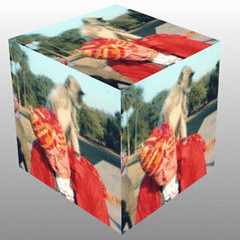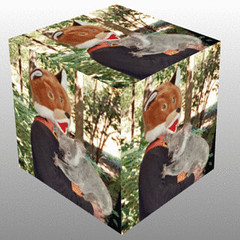I would like to go ahead and state my own prejudices at the very start of this article. I did participate in anti-war demonstrations at Michigan State University in my early teens. I have always considered our military involvement in Vietnam to be both illegal and immoral. I did visit the Củ Chi tunnels in Saigon in 2002 and was impressed by the lengths the Vietnamese were willing to go to achieve self-determination.
I met with a victim of Agent Orange at the Vịnh Mốc tunnels, in 2015. The victim is shaking my hand and is wearing an Adidas hat in the picture below.
The victim was more or less my age. I have managed to get a doctorate and travel all over this world. The poor Agent Orange victim had trouble walking and talking. Who can you blame for what happened to this poor soul? The Nazis were evil people that needed to be stopped. I am proud of what we did during WW II. In the Vietnam War we were the Nazis and I ashamed of what we did in Vietnam! I will have difficulty being objective and judging comics about the Vietnam War using an aesthetic rather than political methodology.
The Vietnam War is probably the most controversial war in US history. From the point of view of Vietnam War protestors the Vietnam War was more or less a evil war. The other point of view is that the Vietnam War was a good war like World War II and therefore comic books that glorify the Vietnam War, like past comic books have glorified other wars, are acceptable. Comic books about the Vietnam War also reflect these two POV’s. The ‘Nam, Born, Vietnam Journal, Such a Lovely Little War: Saigon 1961-63 and The Other Side all reflect the POV that the Vietnam War was a more or less a bad and/or special war and the subject matter should be approached differently than a war like WW II.
The ‘Nam was published by Marvel comics and started out as typical war comic and takes a sympathetic look at the experiences of US soldiers in Vietnam in the first issue.
However, by the last issue the narrative tone has changed dramatically. The last issue shows the war from the POV towards of a North Vietnamese female operative and in the last box in last page has a clueless American officer stating, “Just a kids drawing” when the drawing is actually so much more than that! One of the better uses of indirect characterization in a comic book to make a point. Even towards the end, the US soldiers never had a clue as to what was going on in Vietnam!
Marvel’s second foray into the Vietnam War is Born. Born examines the dehumanization of Frank Castle in Vietnam. Frank Castle had made a brief appearance in The ‘Nam.
What happened to Frank Castle in Vietnam is inescapable and he cannot go home again and will inevitably become the Punisher (Marvel).
John Lomax served in Vietnam and wrote the Vietnam Journal. The comic book is noted for being gritty, realistic and avoiding the glorification of war.
I present the last page to give the reader some idea of the story arc of the graphic novel.
Such a Lovely Little War: Saigon 1961-63 is from the POV of a young man and his family living in Vietnam during the Vietnam War.
The Other Side (Vertigo) goes back and forth between the POV of an American soldier and a North Vietnamese soldier. This POV back and forth technique has the unconscious effect of establishing moral equivalence between the US and North Vietnam.
Nguyen Charlie, Dong Xoai, Will Eisner’s Last Day in Vietnam and Tales of the Green Beret all normalize the Vietnam War. From this comic book POV, the Vietnam War was just another generic war and glorification and/or trivialization of the US role in Vietnam is not a problem.
Nguyen Charlie is a comic strip that is just like any other comic strip you would see in the Sunday funnies except the setting is just happens to be the Vietnam War. If you don’t understand why Hogan’s Heroes is an obscenity then you will not understand why Nguyen Charlies is just wrong! The trivialization of a war that cost millions of Vietnamese their lives, not to mention the lives of thousands of US soldiers is obscene. The author of the strip claimed that he did not want to politicize the war but trivialization is a type of overt propaganda that can be much more toxic than overt propaganda. However, the original comic strip was published in Stars and Stripes, a US military newspaper, and if this comic strip helped American soldiers bear the horror of Vietnam then this is a mitigating factor. Maybe trivialization is a necessary psychological defense mechanism when faced with daily horror. However, the fact that these comic strips were gathered together and published in two collected editions by Arthouse Books like the subject matter was Calvin and Hobbes is beyond obscene. Finally, the comic strip is just not all that funny on any level.
Dong Xoai was written by Joe Kubert. Joe Kubert is famous for creating Sgt. Rock, DC’s foremost WW II war hero. I liked Sgt. Rock as a kid. I don’t mind the simplistic approach to war of Sgt. Rock when it comes to the topic of WW II. Dong Xoai is basically a WW II comic book that could have been written in the fifties. Dong Xoia is the story of brave Americans doing good work in a place called Vietnam but the setting could be anyplace, anywhere. Joe Kubert used unfinished pencil work minus inking and coloring as is the norm in US comic books and this is interesting artistically. Joe Kubert also created Enemy Ace who I deal with in 05) War Comics set in WW I. Joe Kubert was able to apply a certain amount of moral relativism in the case of Enemy Ace but wasn’t able to do this in Dong Xoai.
Will Eisner’s Last Day in Vietnam has a WW II feel from top to bottom. Will Eisner is more or less an inventor of many comic book narrative conventions and is the first person to really add a theoretical foundation to the art of comic books in Comics and Sequential Art (1985). Eisner is always pushing comic books as a medium and is doing something interesting in terms of plot in this book. In the story, A Dull Day in Korea, an American soldier about to shoot an unarmed, middle aged, Korean lady but the story comes to a very undramatic end which seems very true to life.
I also liked the Eisner story The Casualty which I present below:
I think Eisner just got a bunch of stories from GI’s and wrote up then most interesting ones. Eisner, in a manner similar to Dong Xai, uses pencil work minus inking and color but detailed pencil work is used unlike Dong Xoai‘s unfinished pencil work. The art work is excellent when it comes to capturing facial expressions but this is a forte of Eisner overall. All in all a good read despite not having an anti-war slant. Maybe I can place aesthetics over political correctness!
Dell published the very first Vietnam War comic, Jungle War Stories which was titled Guerilla War starting in issue 12. Jungle War Stories had hand painted covers. Who can resist buying a comic book with a cover like the one in Jungle War Stories #10?
Guerilla War had line art covers. Both titled versions were about brave soldiers in Vietnam doing the best they can with no mention of the absurdity of the Vietnam War. Apparently napalm is not war crime but a necessity as we see in Guerilla War #12.
Another view of the “necessity” of the use of napalm is provided by the Phan Thi Kim Phuc picture below.
Tales of the Green Beret is the type of Vietnam War comic I hate! Joe Kubert returns to Vietnam and once again gets Vietnam mixed up with World War II. Tales of the Green Beret is a collection of jumping the shark plots that show war is not hell but in fact a really fun game that should be played by the whole family and especially your sons! I suppose this “War is a Game” theme is pretty bad when applied to any war but for reasons I have mentioned in the beginning, I find this theme especially obscene in the case of comic books about the Vietnam War.
The Vietnam War: A Graphic Novel by Dwight Jon Zimmerman, Wayne Vansant and Chuck Horner takes a documentary approach to the Vietnam War.
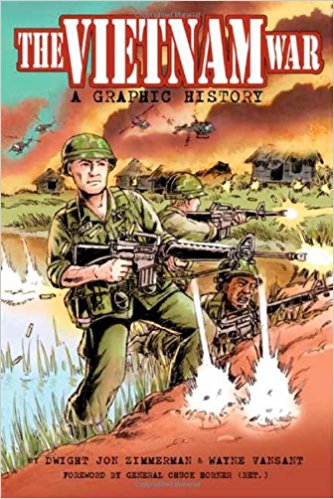
Vietnamerica A Family’s Journey by G.B. Tran also takes on a documentary approach but from a more personal perspective and focuses on how the Vietnam War affected his family from Vietnam. Tran’s family ultimately ends up in the United States. The author knew little about his Vietnamese heritage until he was older and visited Vietnam in 2001.
In War Wings #3 (Charlton), the reader finds out that you can’t trust any Vietnamese but of course we already knew that.
Next 09) War Comics set in the War in Afghanistan
WereVerse Universe Baby!


































